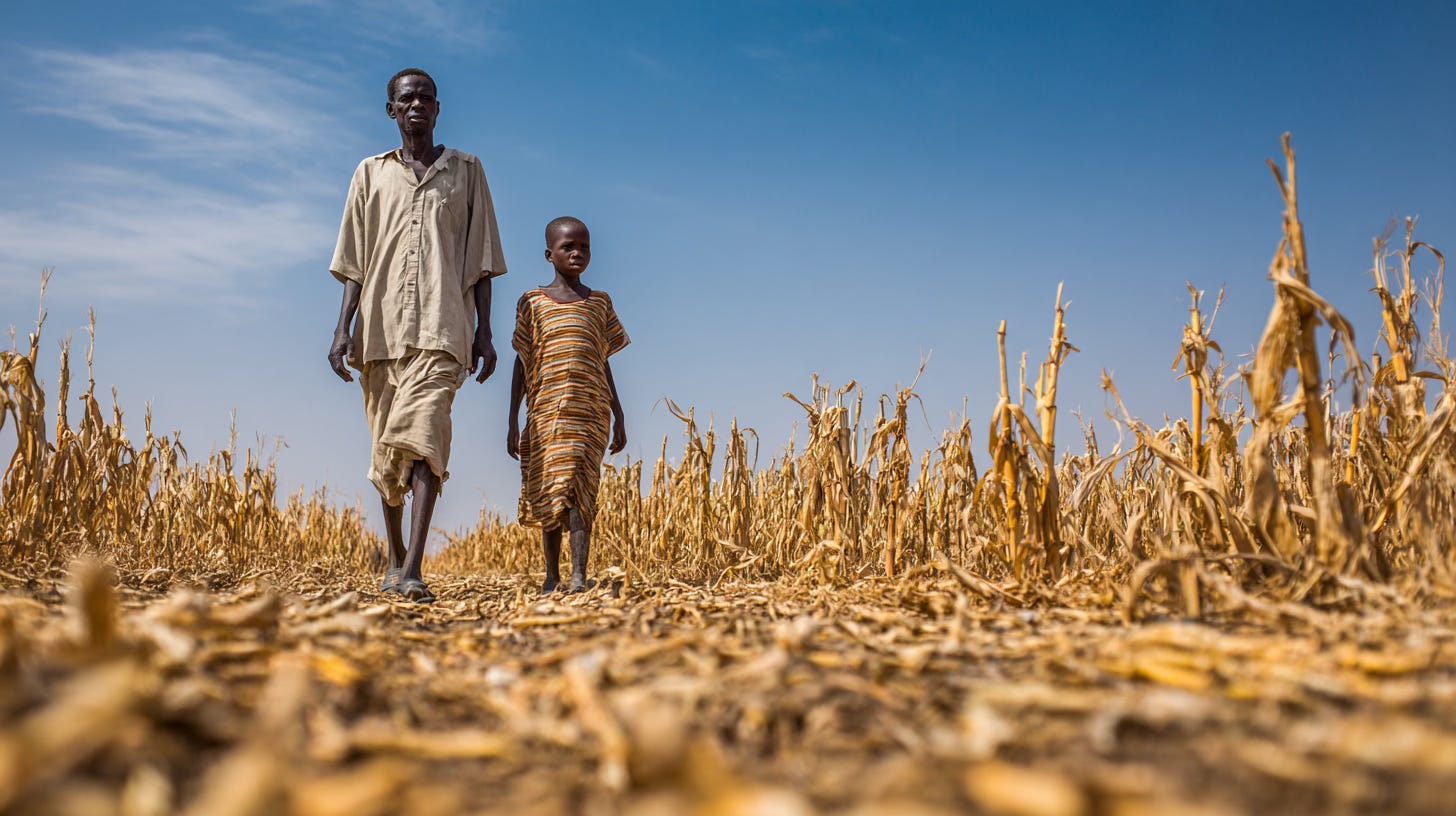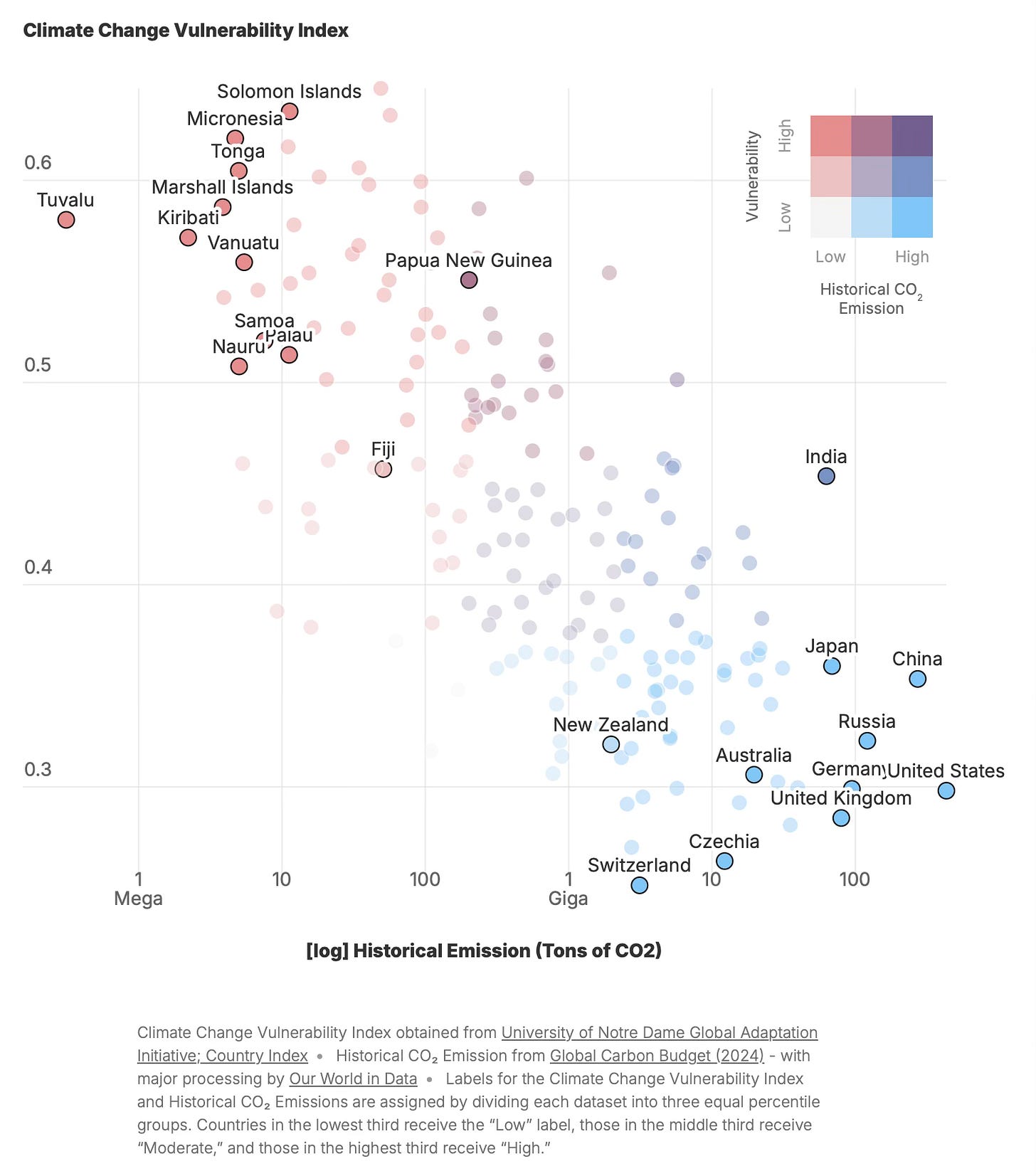Poorer nations pollute less but suffer more from climate change
Five charts to start your day
The cruel irony of climate change is that those who did the least to cause it are the ones suffering most from its effects. Across the Pacific, tiny island nations like Tuvalu, Vanuatu and the Solomon Islands face rising seas, stronger storms and vanishing coastlines, yet their contribution to global carbon emissions is almost zero.
It is a story of climate injustice written in data. Wealthy nations built prosperity on fossil fuels and now enjoy the defences that wealth affords: strong infrastructure, adaptable economies and the power to relocate or rebuild. Developing countries have none of those luxuries. Their geography and dependence on fragile ecosystems make them acutely vulnerable to forces they cannot control.
But there is another current in the story, which is one of potential redemption. Renewable energy has moved from the margins to the mainstream, proving that cleaner power can compete on cost and scale. The United States, once a symbol of energy dependence, now exports more natural gas than it imports. Even consumer markets tell a similar story: old models lose their grip, new players adapt, and the world slowly reshapes itself around efficiency and resilience.
Climate justice is not just about cutting emissions. It is about who gets left behind when the energy transition happens, and who has the means to adapt when the world warms. Our first chart show what words can’t.
Quick note — Killer Charts has been $8/month and $80/year since launch two years ago. From 1 December the price for new subscribers will rise to $10/month and $100/year. If you’ve been meaning to upgrade, you can lock in the old rate for life here.CHART 1 • Poorer nations pollute less but suffer more from climate change
The world’s smallest nations are paying the highest price for a crisis they did not cause. This chart shows that small island developing states such as Tuvalu, Vanuatu and the Solomon Islands rank among the most vulnerable to climate change, despite contributing almost nothing to global greenhouse gas emissions.
At the other end of the scale sit the world’s major emitters. The United States, China and much of Europe have emitted billions of tonnes of CO₂ over time, yet face relatively low climate vulnerability. Wealth, geography and infrastructure have insulated them from the worst effects of global warming that now threaten the survival of entire island communities.
If those least responsible for climate change are the ones most at risk, what does climate justice look like in a warming world?
Source: Adhyaksa
We talk endlessly about net zero emissions, yet rarely about fairness: who pays, who adapts, and who simply disappears. Climate policy is often framed in tonnes of carbon, but behind every number are lives, homes and histories that cannot be replaced.
I’ve got four more charts that expand on this story, but they’re for paid subscribers. Consider joining if you want the full edition and a deeper look at what the data reveals about responsibility, resilience and repair in a warming world.




